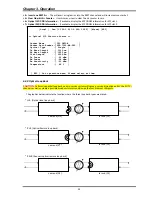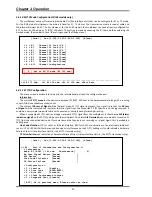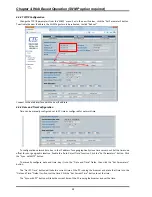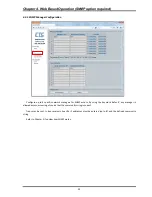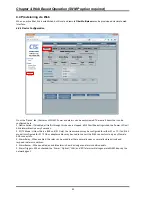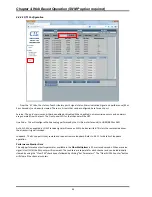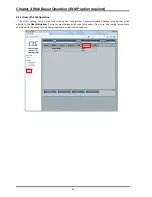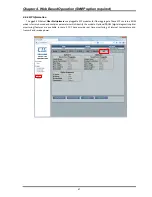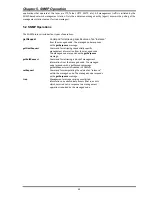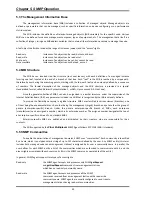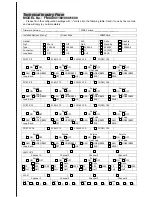
Chapter 4. Web Based Operation (SNMP option required)
43
4.4.2
Optical
Configuration
From
the
'Optical'
tab,
the
status
of
fiber
ports,
current
working
path
and
Bit
Error
count
can
be
easily
viewed.
There
are
3
items
that
can
be
configured
here.
1.
Protection
Mode
‐
The
default
is
1+1
protection,
non
‐
reverting.
Non
‐
reverting
means
that
even
if
a
faulty
path
is
re
‐
established,
the
Fiber
Multiplexer
will
continue
with
its
current
path
i.e.,
not
revert.
The
reverting
mode
will
return
the
path
to
the
preferred
path
after
the
broken
path
as
been
repaired.
i.e.,
revert
back.
The
other
two
options
can
be
used
to
manually
force
the
path
to
optical
1
or
optical
2
path.
2.
ALS
‐
Automatic
Laser
Shutdown
(ALS)
is
a
technique
used
to
automatically
shut
down
the
output
power
of
the
transmitter
in
case
of
fiber
break
according
to
ITU
‐
T
G.664.
This
is
a
safety
feature
that
prevents
laser
light
from
leaking
out
of
a
broken
fiber,
provided
ALS
is
provisioned
on
both
ends
of
the
fiber
pair.
ALS
is
disabled
by
default.
3.
Loopback
Test
‐
Be
very
careful
when
selecting
optical
loopback.
All
traffic,
including
Ethernet
will
be
looped
and
could
cause
unintended
effects.
Please
review
the
loop
back
types
in
section
3.4.9.
Notes
on
BERT
The
Fiber
Multiplexer
includes
a
channel
which
constantly
runs
a
bit
error
rate
pattern.
A
counter
will
count
any
errors
that
are
received
on
this
channel.
An
incrementing
counter
is
an
indication
of
poor
fiber
transmission
and
should
be
troubleshot.
Two
buttons
are
available
along
with
the
counter.
The
'Clear
Bit
Error'
button
should
be
self
evident;
it
clears
the
accumulated
Bit
Error
Counter
to
zero.
The
"Insert
Bit
Error"
button
is
a
test
that
should
insert
exactly
one
error
when
pressed.
This
assures
we
are
really
working
on
a
functional
pair
of
Fiber
Multiplexers
.
Summary of Contents for FMUX160
Page 2: ......
Page 34: ...Chapter 3 Operation 34 This page was left blank intentionally ...
Page 54: ......
Page 55: ......
Page 56: ......

